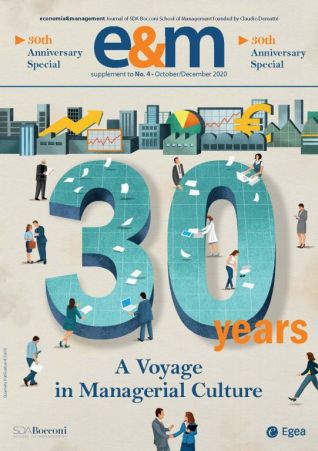E&M
2020/5
1988-1997: The Debate on Business Models
On the occasion of our magazine's thirtieth anniversary, we inaugurate here a mini-series of four articles dedicated to the history of Economia & Management: a contribution to understand, starting from the pages of E&M, how the debate on managerial issues has been constructed and disseminated in Italy from the 1980s until today. This initial article, that focuses on the founding decade, will be followed by two dedicated to the decades 1998-2007 and 2008-2018, to then conclude with an overview of the entire life of E&M.




